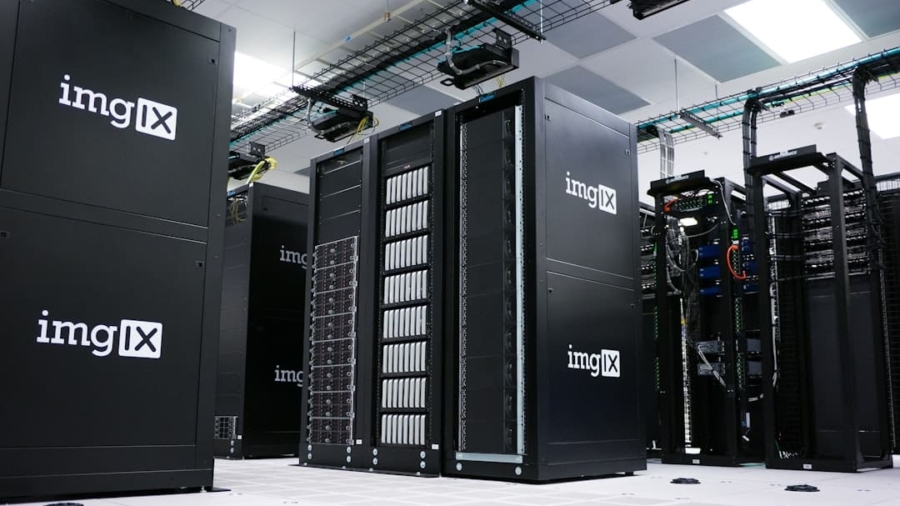The advent of 5G technology marks a significant leap in telecommunications, promising to revolutionize how we connect and interact with the digital world. Unlike its predecessor, 4G, which primarily focused on enhancing mobile internet speeds, 5G introduces a paradigm shift by offering not only faster data rates but also lower latency and increased capacity. This new generation of wireless technology operates on a broader spectrum, utilizing higher frequency bands that allow for more data to be transmitted simultaneously.
The implications of this are profound, as it enables a multitude of devices to connect seamlessly, paving the way for innovations across various sectors, including healthcare, transportation, and entertainment. As 5G networks continue to roll out globally, the potential applications are becoming increasingly apparent. One of the most exciting areas poised for transformation is gaming, particularly multiplayer cloud gaming.
The combination of high-speed connectivity and low latency creates an environment where gamers can engage in real-time interactions without the frustrating delays that have historically plagued online gaming experiences. This technological evolution not only enhances the quality of gameplay but also democratizes access to high-end gaming experiences, allowing players to enjoy sophisticated graphics and complex game mechanics without the need for expensive hardware.
Key Takeaways
- 5G technology is set to revolutionize the gaming industry with its high-speed, low-latency connectivity.
- Multiplayer cloud gaming will benefit greatly from 5G, allowing for seamless, lag-free experiences for players around the world.
- 5G will enhance gaming experiences by enabling higher resolution, faster frame rates, and more immersive gameplay.
- Overcoming latency and bandwidth challenges with 5G will result in smoother, more responsive gaming experiences for players.
- Virtual reality and augmented reality gaming will see significant advancements with the introduction of 5G technology, offering more realistic and immersive experiences for gamers.
The Impact of 5G on Multiplayer Cloud Gaming
The impact of 5G on multiplayer cloud gaming is profound, as it fundamentally alters how games are delivered and experienced. Traditionally, multiplayer gaming has relied heavily on local hardware capabilities, with players needing powerful consoles or PCs to run graphically intensive games. However, with the advent of cloud gaming services powered by 5G, the need for high-end hardware diminishes significantly.
Players can stream games directly from the cloud, accessing vast libraries of titles without the burden of downloads or installations. This shift not only reduces the cost barrier for gamers but also allows for a more flexible gaming experience, as players can switch between devices seamlessly. Moreover, 5G’s ultra-reliable low-latency communication (URLLC) capabilities are particularly beneficial for multiplayer gaming scenarios where split-second decisions can determine the outcome of a match.
In fast-paced games like first-person shooters or battle royale titles, even a few milliseconds of delay can lead to a disadvantage. With 5G’s promise of latency as low as one millisecond, players can expect a near-instantaneous response from their actions, creating a more immersive and competitive environment. This level of responsiveness is crucial for maintaining the integrity of gameplay and ensuring that all players have an equal opportunity to succeed.
Enhanced Gaming Experience with 5G

The enhanced gaming experience facilitated by 5G technology extends beyond mere speed and latency improvements; it encompasses a richer and more immersive environment for players. With increased bandwidth capabilities, developers can create games with higher resolutions and more intricate details without compromising performance. This means that gamers can enjoy stunning graphics that were previously only possible on high-end gaming rigs.
The ability to stream high-definition content seamlessly allows for a more engaging visual experience, drawing players deeper into the game world. Additionally, 5G enables advanced features such as real-time updates and dynamic content delivery. Game developers can push updates and new content directly to players without requiring lengthy downloads or interruptions in gameplay.
This capability not only keeps the gaming experience fresh but also allows developers to respond quickly to player feedback and make adjustments in real-time. For instance, in a multiplayer game, if a particular character or weapon is deemed overpowered, developers can tweak its attributes on the fly, ensuring balanced gameplay without waiting for scheduled patches.
Overcoming Latency and Bandwidth Challenges
One of the most significant challenges in online gaming has always been latency—the delay between a player’s action and the game’s response. Traditional internet connections often struggle with this issue due to various factors such as network congestion and distance from servers. However, 5G technology addresses these challenges head-on by providing a more stable connection with significantly reduced latency.
The architecture of 5G networks allows for more efficient data routing and processing, which translates into quicker response times for gamers. Bandwidth limitations have also been a concern in online gaming, particularly when multiple players are connected simultaneously. With 5G’s enhanced capacity, networks can support a larger number of devices without sacrificing performance.
This is particularly important in multiplayer environments where numerous players are interacting in real-time. The ability to maintain high-quality connections even during peak usage times ensures that gamers can enjoy uninterrupted gameplay, regardless of their location or the number of users on the network.
Advancements in Virtual Reality and Augmented Reality Gaming
The integration of 5G technology is set to propel virtual reality (VR) and augmented reality (AR) gaming into new realms of possibility. VR gaming requires substantial data transfer rates to deliver immersive experiences that feel realistic and engaging. With 5G’s high-speed connectivity, VR headsets can stream high-definition content with minimal lag, allowing players to explore virtual worlds without the constraints imposed by wired connections or local hardware limitations.
Similarly, AR gaming benefits immensely from 5G’s capabilities. Games that overlay digital elements onto the real world require real-time data processing and interaction with the environment. With 5G’s low latency and high bandwidth, AR applications can provide seamless interactions that enhance gameplay experiences.
For example, games like Pokémon GO could evolve into more complex experiences where multiple players interact with shared AR environments in real-time, creating dynamic gameplay scenarios that were previously unattainable.
Opportunities for Mobile Gaming

Unlocking New Avenues for Game Developers
This shift in mobile gaming enables developers to create innovative titles that leverage the unique capabilities of 5G networks. For instance, games that incorporate location-based elements or real-time multiplayer interactions can thrive in a 5G environment. Developers can design experiences that encourage social interaction among players in physical spaces, fostering community engagement through shared gaming experiences.
Enhancing Social Interaction and Community Engagement
The 5G environment provides a platform for developers to create games that promote social interaction and community engagement. By incorporating location-based elements, developers can design experiences that bring players together in physical spaces, creating a new level of engagement and interaction.
The Future of Mobile Esports
The potential for mobile esports also expands significantly as competitive gaming becomes more accessible to a broader audience.
5G and the Rise of Cloud Gaming Platforms
The rise of cloud gaming platforms is intrinsically linked to the capabilities offered by 5G technology. Services like Google Stadia, NVIDIA GeForce NOW, and Xbox Cloud Gaming are already capitalizing on the ability to stream games directly from powerful servers to players’ devices. With 5G’s enhanced speed and reliability, these platforms can deliver high-quality gaming experiences that rival traditional console or PC setups.
Cloud gaming eliminates many barriers associated with traditional gaming models, such as hardware limitations and lengthy downloads. Players can access an extensive library of games instantly without needing to invest in expensive equipment or wait for installations. This democratization of access allows a wider audience to engage with gaming content, fostering growth within the industry.
As 5G networks become more widespread, cloud gaming platforms will likely see increased adoption rates as players seek convenient and flexible ways to enjoy their favorite titles.
The Future of 5G and Next-Gen Multiplayer Cloud Gaming
Looking ahead, the future of 5G technology in conjunction with next-gen multiplayer cloud gaming appears bright and full of potential. As network infrastructure continues to improve and expand globally, we can expect even more innovative applications within the gaming industry. Developers will likely explore new genres and gameplay mechanics that take full advantage of 5G’s capabilities, leading to unique experiences that were previously unimaginable.
Furthermore, as competition among cloud gaming platforms intensifies, we may see advancements in subscription models and game offerings that cater to diverse player preferences. The integration of artificial intelligence (AI) could also play a significant role in shaping future gaming experiences by personalizing content based on player behavior and preferences. As we stand on the brink of this new era in gaming powered by 5G technology, it is clear that both players and developers will benefit from the enhanced connectivity and immersive experiences that lie ahead.
In a recent article discussing the future of 5G for next-gen multiplayer cloud gaming, it is important to consider the engineering process when working with startups.

